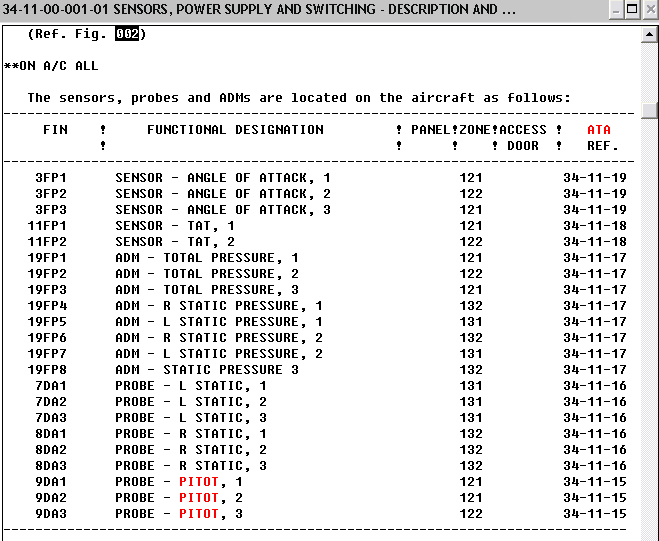RWA, DC-ATE;
Once again, a non-flying, non-experienced, non-trained, non-pilot offers an "IT" opinion on something he knows nothing about and says so, and you think the remark is "brilliant", a "truly great comment...", or "very well put..." ? Why?
Desertia states right at the start of the post:
As nothing more than a curious member of the SLF, I've obviously not posted my groundless theories on what could have happened, preferring to read the myriad of alternatives offered on here, and keeping an open mind given that it's obvious that there is still insufficient evidence to identify the cause of this crash.
But one thing I would like to say, having been in the IT field in a variety of positions over the years, is that you cannot underestimate the risk of human error, or at least limitations in putting together the millions of line of code required to automate something as complex as flight.
I have flown 18,000+hrs since 1967 and have flown as captain and as an A320 instructor, 319s, 320s, 330s and 340s since 1992, (I'm now retired) and even with that background I do not consider myself beyond learning, (fearing to go where angels tread), am not an IT or structural engineer, but I know a thing or two about flight safety work and about the Airbus (and other types, B767, B727, L1011, DC8, DC9). There are many people here with similar and greater qualiications who, because they are experts, know what they dont' know and are prepared to ask questions instead of making sweeping, grandiose pronouncements on "Airbus dangers", "fly-by-wire" or comparing the Airbus with the difficulties of designing "computerized bikes". There is simply no comparison with the metaphor in this last.
Gentlemen, no one at Airbus is underestimating the risk of human error, nor are they at Boeing. The record of millions of takeoffs, landings and hours flown by both manufacturer's transports without fatal accident proves this to be true. To support statements that claim otherwise is to offer thoughts in basic ignorance of the aircraft involved.
There is no "smoking gun" latent in these designs which good training and experience cannot address. Neither the B777 nor the 340 designs have such faults; nor are they invincible when circumstances overwhelm the man-machine interface.
Neither one of you fly the Airbus or even know the first thing about its systems or how it's built yet you're willing to condemn the airplane based on the flimsiest notions of someone who isn't even in aviation.
This is not how flight safety or investigative work is done, and if I may make the observation yet again, THAT is the problem with this thread, while the contributions of those who are the experts and who do the work go ignored, unrecognized or unread.
Specifically - RWA, you recommended the CSM (Christian Science Monitor) article as something to read to understand this accident. Frankly, it is composed of the same imaginative analysis and reporting that exists here and in any other media; it's noise and it's print filling the vacuum. For example, the article states that, "the cabin had lost pressure and was climbing at a rate of 1800fpm".
Except perhaps from the thousands of non-expert, non-pilot, non-engineer, non-maintenance comments, where did they get that from? Where does anyone get this information from? Even if it's "18,000fpm"...where does that come from? There are other problems with this article as many know.
I have the ACARS messages just like the rest of the world now does and I have access to an AMM. Interpreting the thin, tiny bit of information available through the ACARS messages is not a straightforward exercise in reading the AMM. From the start of the last thread and this one, I and many experts have advocated reserved and cautious approach when interpreting these messages. For many reasons, this list could be, (and almost certainly is, given the intent and design of the ACARS-CMS-FIDS systems and the SITA protocols handling the messages) much larger but we do not have that information.
Here is an example of just a few of the ATA messages that can be generated by the BITE system just within the CPC, (Cabin Pressure Controller). This is by no means a complete ATA fault diagnosis list for the cabin pressue controller. As far as I know, there is not ATA code for "cabin depressurization, Cabin Rate of Climb = nnnnn feet-per-minute":

Here are examples of ATA fault/failure codes for pitot-static probes/sensors. The same issues obtain - the list is by no means complete.
Meaningful interpretations of ATA codes are not straightforward even if the correct documentation, tools and resident expertise are all available. This will not be a straightforward process for the BEA, for Airbus or for AF. It is folly to endeavour to think or do otherwise. Regarding the pitot "faults/failures", notice that the 3 sensors have the same six-digit ATA code. Someone here wisely observed that "underneath" this bread-and-butter ACARS message dump is very likely a highly-detailed message. We do not know if that message was transmitted or received or available.

The way to find things out here in this example is to answer the question, Which is the right ATA code?, and Where is the evidence that tells us we are right?
There is no ATA code for "pitot icing". The theory is the result of hind-sight bias and not the result of any knowledge or evidence. There is only the cryptic ATA message indicating that the receiving computers, (ADIRS, TCAS, CPC, DMUs) were not receiving data that was within specified parameters and therefore caused a BITE and a latched fault/failure message. Nobody anywhere, knows why, yet.